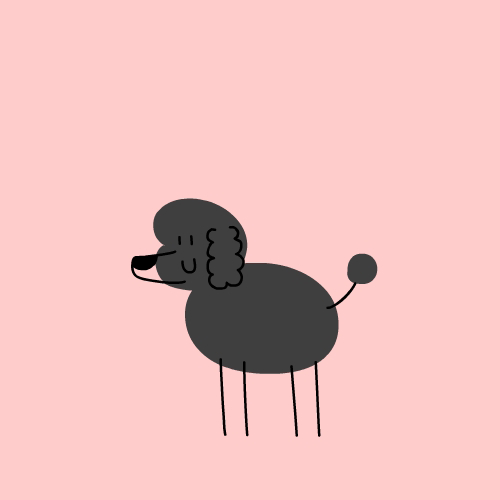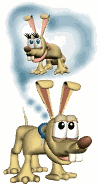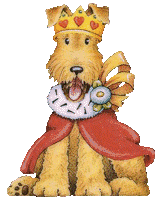
The perfect place to get the perfect puppy of your dreams
IS THIS DOG FOR YOU?
So You Think You Want A Pekingese:
On this page you will find some positive and some negative facts about Pekingese. It is designed to give you the best understanding of the breed to help you decide if a Pekingese is for you.
Size:
This puppy was produced by the outstanding breeding program of Perfect Peks Kennel.
Grooming requirements:
Exercise requirements:
Good with other dogs:
Watchdog ability:
Appearance
The Pekingese breed is over 2000 years old and has hardly changed in all that time. One exception is that modern breeders and dog-show judges seem to prefer the long-haired type over the more-traditional spaniel-type coat.
All breed standards allow all sorts of color combinations. The most common is gold; this is the color of the majority of Pekingese exhibited. Although the breed once came in a variety of colours, the majority of Pekingese are gold, red or sable. Light gold, cream, black, white, sables, black and tan and occasionally 'blue' or slate grey have appeared in the breed. The latter often has poor pigment and light eyes. Albino Pekingese (white with pink eyes) should be bred cautiously due to health problems that have been associated with albinism.
A common misconception people make with the Pekingese breed is they are inactive and slow dogs, usually judged by their long coats. Despite their appearance, the Pekingese is a very athletic breed of dog. The Chinese bred them to be companions to the Emperor of China and his ladies and eunuchs. They have short legs that are bowed. It is said that this was done to discourage wandering. However, they can and will keep up with the big dogs when allowed. The bowed legs makes their walk, run, or trot quite striking. The juvenile appearance of the Pekingese has been attributed to the artificial, perhaps inadvertent, paedomorphosis of an "ancestral" form of the dog through breeding.
Pekes weigh from 7 to 14 pounds (3-6 kg) and stand about 6-9 inches (15-23 cm) at the withers, however they can sometimes be smaller. These smaller Pekes are commonly referred to as "Sleeve" Pekingese or just "Sleeves". The name is taken from ancient times, when emperors would carry the smallest of the breed in their sleeves.
Size
The Pekingese, when lifted, is surprisingly heavy for its size. It has a stocky, muscular body. All weights are correct within the limit of 14 pounds. Disqualification: Weight over 14 pounds. Proportion - Overall balance is of utmost importance. The head is large in proportion to the body. The Pekingese is slightly longer than tall when measured from the forechest to the buttocks. The overall outline is an approximate ratio of 3 high to 5 long.
Proportions
Head
Face - The topskull is massive, broad and flat and, when combined with the wide set eyes, cheekbones and broad lower jaw, forms the correctly shaped face. When viewed from the front, the skull is wider than deep, which contributes to the desired rectangular, envelope-shaped appearance of the head. In profile, the face is flat. When viewed from the side, the chin, nose leather and brow all lie in one plane, which slants very slightly backward from chin to forehead. Ears - They are heart-shaped, set on the front corners of the topskull, and lie flat against the head. The leather does not extend below the jaw. Correctly placed ears, with their heavy feathering and long fringing, frame the sides of the face and add to the appearance of a wide, rectangular head. Eyes - They are large, very dark, round, lustrous and set wide apart. The look is bold, not bulging. The eye rims are black and the white of the eye does not show when the dog is looking straight ahead. Nose - It is broad, short and black. Nostrils are wide and open rather than pinched. A line drawn horizontally over the top of the nose intersects slightly above the center of the eyes. Wrinkle - It effectively separates the upper and lower areas of the face. It is a hair-covered fold of skin extending from one cheek over the bridge of the nose in a wide inverted V to the other cheek. It is never so prominent or heavy as to crowd the facial features, obscure more than a small portion of the eyes, or fall forward over any portion of the nose leather. Stop - It is obscured from view by the over-nose wrinkle. Muzzle - It is very flat, broad, and well filled-in below the eyes. The skin is black on all colors. Whiskers add to the desired expression.Mouth - The lower jaw is undershot and broad. The black lips meet neatly and neither teeth nor tongue show when the mouth is closed.
Neck, Body, Tail
Neck - It is very short and thick. Body - It is pear-shaped, compact and low to the ground. It is heavy in front with well-sprung ribs slung between the forelegs. The forechest is broad and full without a protruding breastbone. The underline rises from the deep chest to the lighter loin, thus forming a narrow waist. The topline is straight and the loin is short. Tail - The high set tail is slightly arched and carried well over the back, free of kinks or curls. Long, profuse, straight fringing may fall to either side.
Forequarters
They are short, thick and heavy-boned. The bones of the forelegs are moderately bowed between the pastern and elbow. The broad chest, wide set forelegs and the closer rear legs all contribute to the correct rolling gait. The distance from the point of the shoulder to the tip of the withers is approximately equal to the distance from the point of the shoulder to the elbow. Shoulders are well laid back and fit smoothly onto the body. The elbows are always close to the body. Front feet are turned out slightly when standing or moving. The pasterns slope gently.
Hindquarters
They are lighter in bone than the forequarters. There is moderate angulation of stifle and hock. When viewed from behind, the rear legs are reasonably close and parallel, and the feet point straight ahead when standing or moving.
Coat
It is a long, coarse-textured, straight, stand-off outer coat, with thick, soft undercoat. The coat forms a noticeable mane on the neck and shoulder area with the coat on the remainder of the body somewhat shorter in length. A long and profuse coat is desirable providing it does not obscure the shape of the body. Long feathering is found on toes, backs of the thighs and forelegs, with longer fringing on the ears and tail. Presentation should accentuate the natural outline of the Pekingese. Any obvious trimming or sculpting of the coat, detracting from its natural appearance, should be severely penalized.
Color
All coat colors and markings are allowable and of equal merit. A black mask or a self-colored face is equally acceptable. Regardless of coat color the exposed skin of the muzzle, nose, lips and eye rims is black.
Gait
It is unhurried, dignified, free and strong, with a slight roll over the shoulders. This motion is smooth and effortless and is as free as possible from bouncing, prancing or jarring. The rolling gait results from a combination of the bowed forelegs, well laid back shoulders, full broad chest and narrow light rear, all of which produce adequate reach and moderate drive.
Disqualification
Weight over 14 pounds.
Temperament
These dogs can be stubborn and jealous. They are childlike and can be opinionated at times. Do not expect this dog to come when it is called. Pekes are sometimes aggressive, especially to other dogs. It may take a long time for Pekes to get used to any other dogs except puppies, mates, and siblings. However, Pekes can be properly socializedwith dogs and other types of pets and can become fast friends. The Pekingese personality has been compared to acat, although this isn't quite right. It simply doesn't realize that it is a dog and would not like to be treated as such. Where a cat can be trained, a Pekingese needs to be convinced that the training is beneficial to the dog and the owner.
The Pekingese is generally a one-person dog. They are loyal and tend to be very protective of their owner. Many breeders will not place the breed in households with young or boisterous children as the breed simply does not enjoy being mauled or expected to tear around in a manner that would be more befitting an agile Poodle or other small breeds.
The Pekingese is a large dog in a small body. It expects to be respected and will not tolerate being treated otherwise.
A combination of regal dignity, intelligence, courageousness and self-importance make for a good natured, opinionated and affectionate companion to those who have earned its respect.
The Pekingese is generally a one-person dog. They are loyal and tend to be very protective of their owner. Many breeders will not place the breed in households with young or boisterous children as the breed simply does not enjoy being mauled or expected to tear around in a manner that would be more befitting an agile Poodle or other small breeds.
The Pekingese is a large dog in a small body. It expects to be respected and will not tolerate being treated otherwise.
A combination of regal dignity, intelligence, courageousness and self-importance make for a good natured, opinionated and affectionate companion to those who have earned its respect.
Health
The leading cause of death for Pekes, as for many other Toy breeds, is congestive heart failure. When diagnosed early and successfully treated with medication, a Peke with this problem can expect to live many years. A heart murmur is a potential sign of a problem, and must be evaluated by a veterinary cardiologist. Very often, the problem does not surface until the dog is 6 or more years old, so it is very difficult to screen the problem in a pup. Pekes' other main problems are eye issues and breathing problems, resulting from its tiny skull and flattened face, and skin allergies (and hotspots). An especially common problem is eye ulcers, which may develop spontaneously. Pekes should never be kept outside as their flattened faces and noses can develop breathing problems, which makes it difficult for them to regulate their body temperature in overly hot or cold weather. Their long backs, relative to their legs, make them vulnerable to back injuries. Care should be taken, when picking them up, to give Pekes adequate back support: one hand under the chest, the other under the abdomen. Short legs give some Pekes difficulty with stairs; older dogs may not be able to go up or down stairs alone.
Care
Keeping the Peke coat healthy and presentable requires brushing once a day. If you do this, they will need to see a groomer only once every 3 months. If a Peke becomes dirty, it is important to take it to a groomer as soon as possible, as it is difficult to remove dirt from its coat once it has dried, but this can be avoided if by brushing regularly, especially the belly, and between the front and hind legs. One important thing for new owners to remember is that dogs intended as a house pet may be kept in a puppy cut which is much more low maintenance than a show cut. It is also important to remove dirt from the eye pores daily, and from the creases on the face to prevent sores (hotspots).
Due to their abundance of hair, it is important to keep the Pekingese cool. Pekes are indoor dogs and they are prone to having heatstroke when exposed to high temperature.
Miscellaneous
Her Imperial Majesty, Empress Dowager Cixi, said:
Let the Lion Dog be small; let it wear the swelling cape of dignity around its neck; let it display the billowing standard of pomp above its back.
Let its face be black; let its forefront be shaggy; let its forehead be straight and low.
Let its eyes be large and luminous; let its ears be set like the sails of war junk; let its nose be like that of the monkey god of the Hindus.
Let its forelegs be bent; so that it shall not desire to wander far, or leave the Imperial precincts.
Let its body be shaped like that of a hunting lion spying for its prey.
Let its feet be tufted with plentiful hair that its footfall may be soundless and for its standard of pomp let it rival the whick of the Tibetans' yak, which is flourished to protect the imperial litter from flying insects.
Let it be lively that it may afford entertainment by its gambols; let it be timid that it may not involve itself in danger; let it be domestic in its habits that it may live in amity with the other beasts, fishes or birds that find protection in the Imperial Palace.
And for its colour, let it be that of the lion - a golden sable, to be carried in the sleeve of a yellow robe; or the colour of a red bear, or a black and white bear, or striped like a dragon, so that there may be dogs appropriate to every costume in the Imperial wardrobe.
Let it venerate its ancestors and deposit offerings in the canine cemetery of the Forbidden City on each new moon.
Let it comport itself with dignity; let it learn to bite the foreign devils instantly.
Let it be dainty in its food so that it shall be known as an Imperial dog by its fastidiousness; sharks fins and curlew livers and the breasts of quails, on these may it be fed; and for drink give it the tea that is brewed from the spring buds of the shrub that groweth in the province of Hankow, or the milk of the antelopes that pasture in the Imperial parks.
Thus shall it preserve its integrity and self-respect; and for the day of sickness let it be anointed with the clarified fat of the legs of a sacred leopard, and give it to drink a throstle's eggshell full of the juice of the custard apple in which has been dissolved three pinches of shredded rhinoceros horn, and apply it to piebald leeches.
So shall it remain - but if it dies, remember thou too art mortal.
Peke legends
There are two origination stories for the Pekingese. The first is the most common, The Lion and the Marmoset:
A lion and a marmoset fell in love. But the lion was too large. The lion went to the Buddha and told him of his woes. The Buddha allowed the lion to shrink down to the size of the marmoset. And the Pekingese was the result.
The second, less-common, originating story is The Butterfly Lions:
A lion fell in love with a butterfly. But the butterfly and lion knew the difference in size was too much to overcome. Together they went to see the Buddha, who allowed their size to meet in the middle. From this, the Pekingese came.
Another legend says that the Peke resulted from the mating of a lion and a monkey, getting its nobleness and coat from the former and its ungainly walk from the latter.
Because the Pekingese was believed to have originated from the Buddha, he was a temple dog. As such, he was not a mere toy. He was made small so that he could go after and destroy little demons that might infest the palace or temple. But his heart was big so that he could destroy even the largest and fiercest. (A book was written from this premise, although the author denies knowledge of the legends: Bride of the Rat God.)
External links
Retrieved from "http://en.wikipedia.org/wiki/Pekingese"
Home is where the dog hair sticks to everything but the dog!
Home is where the dog hair sticks to everything but the dog!







